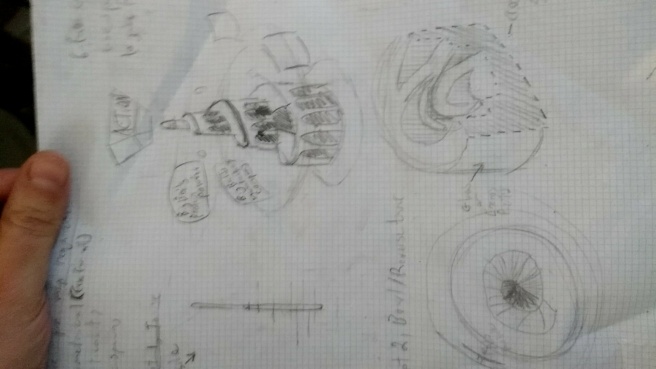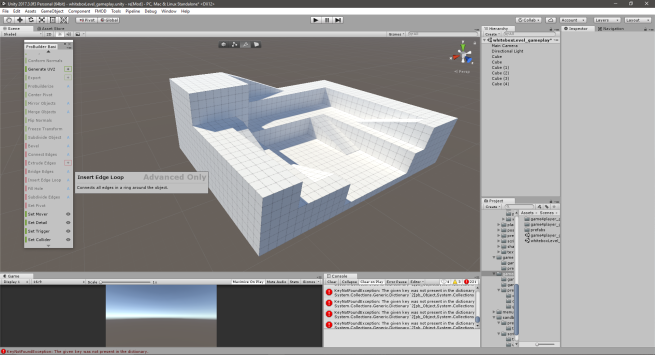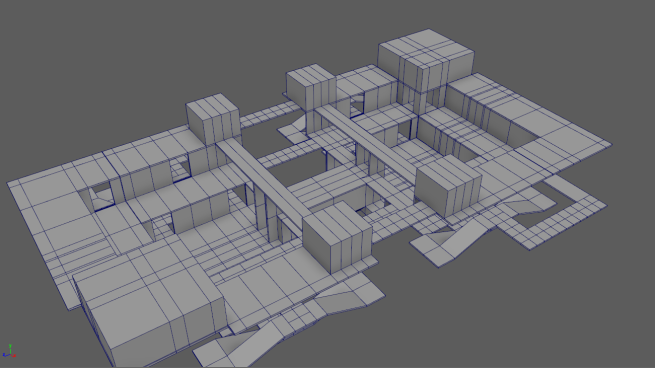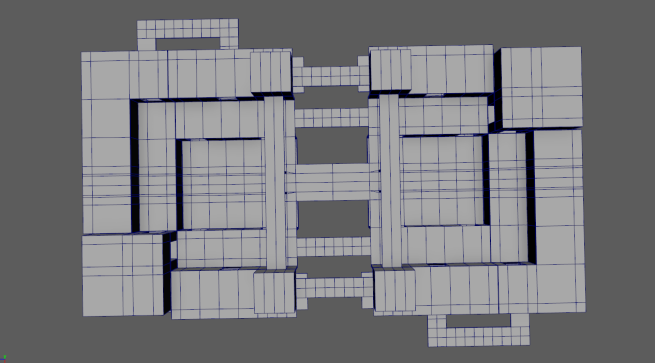We have 2 weeks to get through green light. Last week was a lot of organization, management, setup, and people being sick. this week we have more sickness, but are also starting our attempt to conquer greenlight
Alot of what the team focused on this week was feedback issue, game feel, movement, UI and HUD, and brainstorming new ways to make the gun part changing mechanic more central to the game.
But what I did this week was begin designing the new 6 player map. This started with a list of necessary features and a series of concept sketches (pictured below). the level needed to hold 6 players in a single arena, and be good for both free for all games, as well as 3 v 3 games.
After the sketches, I would use pro builder to actually construct the level whitebox, or so I thought. Probuilders free tools are really limiting. It was useful to be able to make a simple blockout in engine so i could get a sense of scale. but alot of the more complex features couldn’t be easily build in Probuilder. Below is a rough shape, based on the bowl level concept I came up with in the sketches above. its only half the level, and i had to find out a way to make the shape more interesting.
Luckily ive taken quite a few art classes at champlain so im very comfortable in hard surface modelling in maya. So i exported the rough correcct shape of the level, and starting adding in additional paths, cutouts and more to make the level more interesting, and to give the artists a better idea of what architectural features would need to be made. The final whiteblock level includes both halves of the map as well as all major architectural features.

Some major changes that were made is the whole level size was boosted roughly 50% in size, from ~26 x 54m, to 40 x 80m. Besides this, I also did my blog post, and worked with the teams environment artist to talk about asset list. next week, I begin Building
